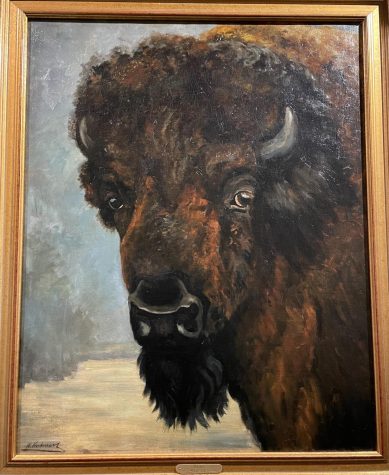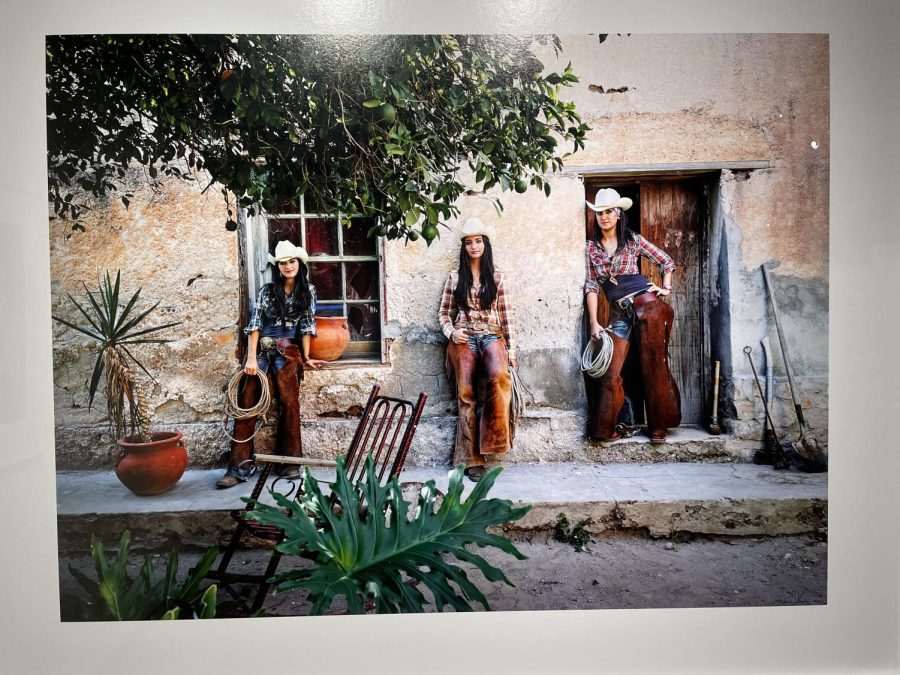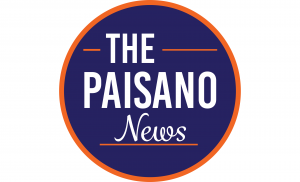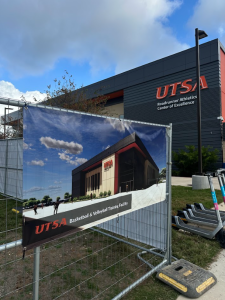Art Feature: Briscoe Art Museum
Learn about Western culture with these eye-catching exhibitions
November 30, 2021
The Briscoe Art Museum is located in Downtown San Antonio, on W. Market Street. Nestled on the banks of the San Antonio River Walk, the museum’s main building served as San Antonio’s original public library in the 1930s followed by the Hertzberg Circus Collection and Museum in the 1980s. After an extensive renovation, the Briscoe Western Art Museum opened in 2013. A branch of the San Antonio Public Library can be found on the first floor, honoring the building’s origins. The museum is named in honor of former Texas Governor Dolph Briscoe Jr. and his wife, Janey Slaughter Briscoe, who envisioned a museum that would share the story of Western heritage and the people behind that story.
Through the preservation of the art, history and culture of the American West, the Briscoe Western Art Museum inspires and educates the public with engaging exhibitions, educational programs and public events reflective of the region’s rich traditions and shared heritage.
Entering the museum, you will be directed to the top floor so that you may progressively make your way down the three floors of the museum that hold multiple galleries and rooms to explore. The museum is also holding a special exhibition, “Vaqueros De La Cruz Del Diablo,” in a separate section of the museum.
This museum tells the stories of the various people groups who have inhabited the West, from the Spanish, to European Settlers, Cowboys and Native Americans. These galleries are the Governor Dolph Briscoe, Jr. Gallery, Enrique and Lydia Guerra and Family Gallery, and the Ruth McLean Bowman Bowers Gallery, which is a gallery dedicated to depicting women in the West.
Upon entering the third floor of the museum, one of the first paintings visible is “Prairie Sundown,” by Ralph Oberg (2018) which is made with oil paints on linen. The picture is on a field of gazelles in an open field, with the outlying hills glowing orange in the sunset.
Another painting titled “Bison” is an eye-catching work nearby, by artist Wilhelm Kuhnert (1865-1926). This painting is of a face of a bison, which is realistic but has visible and free brushstrokes. Kuhnert is what is known as an “animator,” or an artist who trained and specialized in the realistic depiction of animals. This school of art was popular among artists working in the late 18th to 19th centuries. This is a portrait of a European bison that had disappeared from the forests of Germany in the mid-18th century. Kuhnert believed that these animals bore the “stamp of original power and untamable vitality.”

Another piece that can be found near “Bison,” is titled “Once Upon a Time.” It is a striking painting, with two cowboys posed on horses in a field of bushes, with billowing clouds and a canyon valley behind them. What is distinguishable about these two cowboys is that they are Black men, unlike the multitude of white cowboys that line the hallways of the museum.


On the second floor of the museum is “Art of the West,” which is a section of the Gallery that displays art depicting Native Americans in their homeland of Texas, depicting them in both paintings and in sculptures. One of these is “Native with Blue Blanket” by Fitz Scholder (1937-2005). This image is of an older, indigenous man; the background of the painting is bright orange, the man’s face is pink and he is holding around his body a dark, blue robe. This the face of men is both melancholy and stern, in contrast with the vividness of the colors used. Scholder is an artist and teacher from the Institute of American Indian Arts in Sante Fe. The body of his artistic works confronted the stereotypical portrayal of Native Americans in the mid-twentieth century.
“Vaqueros De La Cruz Del Diablo” is the new special exhibition at the museum. This exhibition displays the work of photographer Werner Segarra. His photographs depict the almost unknown world of the vaquero from the Sonoran region of Northern Mexico and reveals the multifaceted aspects of this emblematic figure through portraits of landscape, people and work. Lining the walls of his exhibition are photographs of the Mexican wild, of wide grasslands and desert. There are images of the inside of families’ homes and depictions of vaqueros, cooking, eating and talking to each other. One of the most striking of the photographs is “The Three Marias”— an image of three women posed in front of a house, challenging the masculine stereotype of vaqueros.
Briscoe Western Art Museum has much to offer and is a great place to visit for lovers of art and Texas history. There is so much to see and allows Texas history to come alive as visitors explore each of the museum’s exhibitions. Admissions is $12 for adults, $10 for veterans and students with ID and free for children under twelve. The museum is open Thursday through Monday 10:00 am – 9:00 pm.






